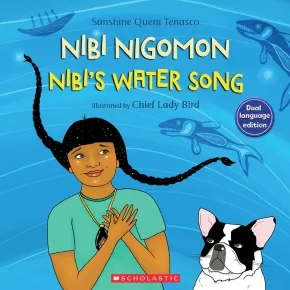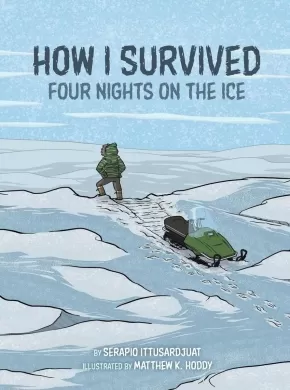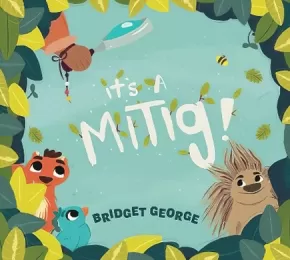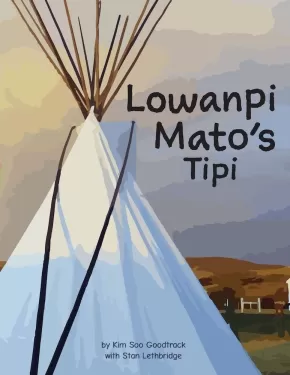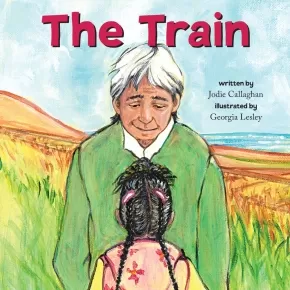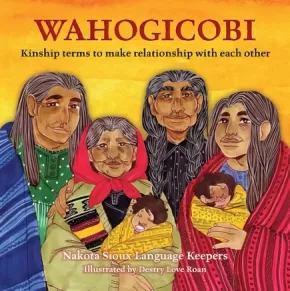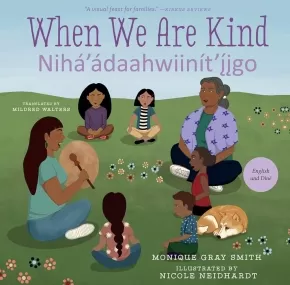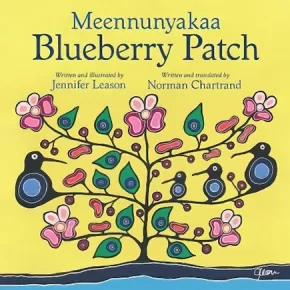
From Sea to Sea to Sea 2021 Edition
1
-
15
of
26 Results;
Sort By
Go To
of 2
Nibi nigomon/Nibi's Water Song
$8.99
Format:
Paperback
Text Content Territories:
Indigenous Canadian; First Nations; Anishinaabeg;
ISBN / Barcode: 9781039700673
Synopsis:
Synopsis:
Nibi is determined to bring clean water to her community.
Nibi is the Anishinabemowin word for water. In Nibi’s Water Song, Nibi is an Indigenous girl on the search for clean water to drink. Though she is faced with repeated obstacles, Nibi’s joyful and determined energy becomes a catalyst for change and action as her community rallies around her to make clean drinking water available for all.
First published in 2020, Nibi’s Water Song was shortlisted for both the IODE Jean Throop Award and longlisted for the First Nations Communities READ Award. This dual-language edition presents the text in both English and Anishinabemowin.
Educator Information
Recommended for ages 4-8.
Dual-language: English and Anishinabemowin
Translated by Tina Nottaway. Tina is an Algonquin Anicinabe Ikwe artist and translator from Rapid Lake, Quebec. She is fluent in her language, Anicinabemowin. Tina is also a crafter and facilitates workshops on moccasin making, birchbark basket making and other cultural activities.
This resource is available in English: Nibi's Water Song
This resource is also available in French: Nibi a soif, très soif
Additional Information
32 pages | 9.51" x 9.51" | Paperback
How I Survived: Four Nights on the Ice (PB)
$18.95
Artists:
Format:
Paperback
Text Content Territories:
Indigenous Canadian; Inuit;
ISBN / Barcode: 9781772274264
Synopsis:
Synopsis:
After his snowmobile breaks down halfway across the sea ice on a trip back from a fishing camp, Serapio Ittusardjuat recounts the traditional skills and knowledge he leaned on to stay alive.
This harrowing first-person account of four nights spent on the open sea ice—with few supplies and no water—shows young readers the determination and strength necessary to survive in the harsh Arctic climate, even when the worst occurs.
Awards
- 2022 Forest of Reading—Silver Birch Express Award
Reviews
"[T]he graphic novel How I Survived is a true story of Arctic survival written by Serapio Ittusardjuat, an Inuk stone carver and former mechanic.... This beautifully designed, highly engaging graphic novel should engross both reluctant readers and those seeking adventure." - Quill & Quire
Educator Information
Recommended for ages 12+
The original hardcover version was included in the Indigenous Books for Schools 2020/2021 resource list as being useful for grades 6 to 9 for English Language Arts and Social Studies.
Additional Information
48 pages | 7.25" x 9.75"
The Pencil (PB)
$14.95
Artists:
Format:
Paperback
Text Content Territories:
Indigenous Canadian; Inuit;
ISBN / Barcode: 9781772275377
Synopsis:
Synopsis:
Susan and her sister, Rebecca, love watching their mother write letters to people in other camps. Their mother has one precious pencil, and she keeps it safe in her box for special things. One afternoon, their mother leaves the iglu to help a neighbour, and Susan, Rebecca, and their brother Peter are left with their father. They play all their regular games but are soon out of things to do—until their father brings out the pencil! As Susan draws and draws, the pencil grows shorter and shorter. What will their mother think when she comes home? Based on author Susan Avingaq’s childhood memories of growing up in an iglu, this charming story introduces young readers to the idea of using things wisely.
Reviews
[A] wonderful and touching story about resilience and thrift and community. The illustrations are appropriately done in pencil, and they are playful and open and beautiful." — The New York Times Book Review
"[A] rich and moving story about how small things can make a tremendous difference in children’s lives...Avingaq’s childhood is beautifully evoked in this charming story about the need to take care of our belongings." — The Globe and Mail
"Authors Avingaq and Vsetula understand life in Nunavut, Canada, and embed in the story the importance of being responsible for belongings and caring for them wisely...A breath of warmth from the far north." — Kirkus Reviews
"A family-focused story with a light moral that lovingly illuminates a lifestyle rarely seen in children’s books." — School Library Journal
"The Pencil goes beyond a lesson in frugality and becomes a story of family, of play and of culture, which many children will appreciate." — CanLit for Little Canadians
Educator Information
Recommended for ages 6 to 8.
Additional Information
36 pages | 9.00" x 7.50" | Paperback
The Origin of Day and Night (PB)
$13.95
Artists:
Format:
Paperback
Text Content Territories:
Indigenous Canadian; Inuit;
ISBN / Barcode: 9781772274691
Synopsis:
Synopsis:
In very early times, there was no night or day and words spoken by chance could become real. When a hare and a fox meet and express their longing for light and darkness, their words are too powerful to be denied. Passed orally from storyteller to storyteller for hundreds of years, this beautifully illustrated story weaves together elements of an origin story and a traditional animal tale, giving young readers a window into Inuit mythology.
Educator Information
Recommended in a Canadian Indigenous Books for Schools resource list as being useful for grades 2-5 in these subject areas: English Language Arts, Social Studies.
Useful as a read-aloud, independent read, or information resource for students.
Additional Information
32 pages | 9.00" x 8.00" | Paperback
Swift Fox All Along (PB)
$10.99
Format:
Paperback
Text Content Territories:
Indigenous Canadian; First Nations; Mi'kmaq;
ISBN / Barcode: 9781773214474
Synopsis:
Synopsis:
What does it mean to be Mi’kmaq? And if Swift Fox can’t find the answer, will she ever feel like part of her family?
When Swift Fox’s father picks her up to go visit her aunties, uncles, and cousins, her belly is already full of butterflies. And when he tells her that today is the day that she’ll learn how to be Mi’kmaq, the butterflies grow even bigger. Though her father reassures her that Mi’kmaq is who she is from her eyes to her toes, Swift Fox doesn’t understand what that means. Her family welcomes her with smiles and hugs, but when it’s time to smudge and everyone else knows how, Swift Fox feels even more like she doesn’t belong.
Then she meets her cousin Sully and realizes that she’s not the only one who’s unsure—and she may even be the one to teach him something about what being Mi’kmaq means. Based on the author’s own experience, with striking illustrations by Maya McKibbin, Swift Fox All Along is a poignant story about identity and belonging that is at once personal and universally resonant.
Reviews
“A touching and universal narrative . . . This title should definitely be added to any list of recommended children’s books focused on Indigenous life, family, tradition, feelings, anxiety, fear and self-regulation. Swift Fox All Along is also brimming with cross-curricular applications for school use, including incorporation with science, social studies, history, language, and mental health. Highly Recommended.” — CM Reviews
“Highlights the importance of connections to culture and self.” — Kirkus Reviews, 07/28/20
"This is a straightforward tale of a girl finding her way into a culture that is her heritage, yet new to her. As such, it works effectively. This may suit libraries in need of more modern Native picture books with child appeal.” — School Library Journal, 08/20
Educator Information
Recommended for ages 4 to 7.
Own voices: Illustrator Maya McKibbin is a two-spirited Yaqui, Ojibwe and Irish. Author Rebecca Thomas is an award-winning Mi’kmaw poet. The story is deeply personal. Rebecca is of mixed heritage and grew up off-reserve and was 6 years old before she began getting to know her father. Her dad himself attended a residential school and had lost connection with his culture and language. This was something regained later with wider visits to his home community and wanted to share with his children.
Important themes: the Indigenous story is full of universal themes including family, connection, identity and self-acceptance.
This book is available in French: Wowgwis de la tête aux pieds
Additional Information
36 pages | 9.00" x 10.25" | Paperback
I Lost My Talk (PB)
$13.95
Artists:
Format:
Paperback
Text Content Territories:
Indigenous Canadian; First Nations; Mi'kmaq;
ISBN / Barcode: 9781774710050
Synopsis:
Synopsis:
I lost my talk
The talk you took away
When I was a little girl
At Shubenacadie school.
One of Rita Joe's most influential poems, "I Lost My Talk" tells the revered Mi'kmaw Elder's childhood story of losing her language while a resident of the residential school in Shubenacadie, Nova Scotia. An often quoted piece in this era of truth and reconciliation, Joe's powerful words explore and celebrate the survival of Mi'kmaw culture and language despite its attempted eradication.
A companion book to the simultaneously published I'm Finding My Talk by Rebecca Thomas, I Lost My Talk is a necessary reminder of a dark chapter in Canada's history, a powerful reading experience, and an effective teaching tool for young readers of all cultures and backgrounds. Includes a biography of Rita Joe and striking colour illustrations by Mi'kmaw artist Pauline Young.
Reviews
"This picture book version of I Lost My Talk is best read with Rebecca Thomas’s I’m Finding My Talk. These haunting, evocative books bring an original approach to the exploration of Canadian residential schools in picture books. For readers and teachers who appreciate fact-based information, there is also “A Short History of Residential Schools” at the end of I Lost My Talk. Educators, librarians, and families will find their classrooms and book collections invaluably enriched by these books. They are real tools of truth and reconciliation; as such, they belong on every bookshelf in Canada and beyond." - CM Reviews
Educator Information
Recommended for ages 4 to 9.
This work features a short history of residential schools and information about the author.
Recommended in the Canadian Indigenous Books for Schools 2020/2021 resource list for grades 1-7 for English Language Arts.
Additional Information
32 pages | 8.00" x 10.00"
It's a Mitig!
$24.95
Format:
Hardcover
Text Content Territories:
Indigenous Canadian; First Nations; Anishinaabeg; Ojibway;
ISBN / Barcode: 9781771622738
Synopsis:
Synopsis:
Giizis—the sun—rises. What’s hiding in the trees?
It’s a Mitig! guides young readers through the forest while introducing them to Ojibwe words for nature. From sunup to sundown, encounter an amik playing with sticks and swimming in the river, a prickly gaag hiding in the bushes and a big, bark-covered mitig.
Featuring vibrant and playful artwork, an illustrated Ojibwe-to-English glossary and a simple introduction to the double-vowel pronunciation system, plus accompanying online recordings, It’s a Mitig! is one of the first books of its kind. It was created for young children and their families with the heartfelt desire to spark a lifelong interest in learning language.
Awards
- 2021 First Nation Communities Read 2021 Winner
Reviews
"This is more than a treasure, It's a Migig is a song and a dance for the world in how fun it is to learn Anishinaabe from mentor and visionary Bridget George. I am completely charmed hoping this is the first in a series we can all enjoy together. Written with such love and tenderness, this is a gift for the world. Bravo and mahsi cho, Bridget George." — Richard Van Camp, author of Welcome Song for Baby and Little You
Educator Information
Recommended for ages 3 to 5.
Additional Information
32 pages | 10.70" x 9.55"
Kits, Cubs, and Calves: An Arctic Summer
$17.95
Artists:
Format:
Hardcover
Text Content Territories:
Indigenous Canadian; Inuit;
ISBN / Barcode: 9781772272741
Synopsis:
Synopsis:
Akuluk is visiting her family in Nunavut and can’t wait to get out on her uncle’s boat for a ride into the powerful Arctic Ocean. Surrounded by her family, and with her trusty toy polar bear beside her, Akuluk experiences the beautiful sights, sounds, and animals that abound in the ocean and along the shore during the short Arctic summer—from a mother polar bear and her cubs to a family of belugas and tiny Arctic fox kits. As they encounter each animal, Akuluk’s aunt and uncles share with her how each species cares for its young, and how they protect their babies from the other animals who share their ecosystem.
This beautiful story of family connection and respect for the natural world teaches young readers how close humans are to our animal counterparts and that caring for the environment in which we live is one of our most important responsibilities.
Reviews
"Kits, Cubs, and Calves: An Arctic Summer goes beyond summer and gives a picture of life in the arctic for its people, its animals and the land, and it's a great place to visit through Suzie Napayok-Short and Tamara Campeau's work." — CanLit for Little Canadians
Educator Information
Recommended for ages 5 to 7.
Additional Information
32 pages | 9.00" x 8.00"
Lowanpi Mato’s Tipi
 $18.50
$18.50

Artists:
Format:
Hardcover
Text Content Territories:
Indigenous Canadian; First Nations; Sioux; Lakota;
ISBN / Barcode: 9781771744751
Synopsis:
Synopsis:
“Hokahe! Welcome!”
Welcome to Wood Mountain, home of the Lakota People, in southern Saskatchewan. It is here that we meet Stan Lethbridge, whose ancestral name is Lowanpi Mato (Singing Bear).
Join Lowanpi Mato as he prepares to set up his summer Tipi. He shares with us Lakota life values and traditions, and how they connect to building and taking care of a Tipi. He teaches us that to build a Tipi you need many items; some are from natural sources and others are purchased from a store. Lowanpi Mato takes us through a step-by-step building process so that we can all learn how a Tipi is built.
The Lakota language is woven throughout the story. The Lakota counting chart on pages 30 and 31 invites you to learn to count and have some fun looking back through the book to find items that match each number.
Welcome to Wood Mountain, home of the Lakota People, in southern Saskatchewan. It is here that we meet Stan Lethbridge, whose ancestral name is Lowanpi Mato (Singing Bear).
Join Lowanpi Mato as he prepares to set up his summer Tipi. He shares with us Lakota life values and traditions, and how they connect to building and taking care of a Tipi. He teaches us that to build a Tipi you need many items; some are from natural sources and others are purchased from a store. Lowanpi Mato takes us through a step-by-step building process so that we can all learn how a Tipi is built.
The Lakota language is woven throughout the story. The Lakota counting chart on pages 30 and 31 invites you to learn to count and have some fun looking back through the book to find items that match each number.
Educator Information
Lakota language is woven throughout this story, as are the seven values of Lakota life.
Lakota language is woven throughout this story, as are the seven values of Lakota life.
Includes a counting chart from 1 to 20 in Lakota, as well as a search-and-find counting game.
Additional Information
32 pages | 8.5" x 11" | Hardcover | ISBN: 9781771744751
32 pages | 8.5" x 11" | Hardcover | ISBN: 9781771744751
The Eagle Mother
$23.00
Artists:
Format:
Hardcover
Text Content Territories:
Indigenous Canadian; First Nations; Gitxsan (Gitksan);
ISBN / Barcode: 9781553798590
Synopsis:
Synopsis:
Return to the valleys of the River of Mists with award-winning author Hetxw'ms Gyetxw (Brett D. Huson). Nox xsgyaak, the eagle mother, cares for her brood in the embrace of a black cottonwood with the help of her mate. Will both eaglets survive the summer in an environment that is both delicate and unforgiving?
Learn about the life cycle of these stunning birds of prey, the traditions of the Gitxsan, and how bald eagles can enrich their entire ecosystem. Evocative illustration brings the Xsan's flora and fauna to life for middle years readers in book three of the Mothers of Xsan series.
Reviews
“The Eagle Mother by Hetxw’ms Gyetxw (Brett D. Huson) and illustrator Natasha Donovan, the third in the Mothers of Xsan series, which offers a perspective on the life cycle of animals important to the land and to people.”— Publishers Weekly
"For further learning about the Gitxsan, the author has included a glossary titled "The Gitxsan Moons" and a summary of Gitxsan Nation clans" - Canadian Indigenous Books for Schools 2020/2021
Educator & Series Information
Recommended ages: 9 to 12 (Grades 3 to 7).
This is the third book in the Mothers of Xsan series, which uses striking illustration and lyrical language to bring the poetry of the Xsan ecosystem to life. The traditional Gitxsan formline art and language weave together throughout the stories in this series to paint a vivid picture of the Gitxsan people.
The Mothers of Xsan series is a collection of stories that connect the world to the matrilineal society of the Gitxsan people, located in Northwestern British Columbia. It presents scientific knowledge in language and a format that is accessible. Each book in the series showcases the depth and importance of the knowledge that has been gathered and shared through this unique style of storytelling. The stories of life cycle, connection the land and language are told from the perspective of the Mothers of Xsan system's animals.
Recommended in the Canadian Indigenous Books for Schools 2020/2021 resource list as being useful for grades 1-4 in the areas of Language Arts, Science, and Social Studies.
Additional Information
32 pages | 6.50" x 10.00"
The Train
$19.95
Artists:
Format:
Hardcover
Text Content Territories:
Indigenous Canadian; First Nations; Mi'kmaq;
ISBN / Barcode: 9781772601299
Synopsis:
Synopsis:
“I’m waiting for what we lost that day to come back to us.”
Ashley meets her great-uncle by the old train tracks near their community in Nova Scotia. When she sees his sadness, he shares with her the history of those tracks. Uncle tells her that during his childhood the train would bring their community supplies, but there came a day when the train took away with it something much more important. One day he and the other children from the reserve were taken aboard and transported to residential school, where their lives were changed forever. They weren't allowed to speak Mi'gmaq and were punished if they did. Uncle tells her he tried not to be noticed, like a little mouse, and how hard it was not to have the love and hugs and comfort of family. He also tells Ashley how happy she and her sister make him. They are what give him hope. Ashley promises to wait with her uncle as he sits by the tracks, waiting for what was taken from their people to come back to them.
Awards
- Co-winner of Second Story Press's Indigenous Writing Contest in 2018
Educator Information
Recommended for ages 6 to 9 (grades 1 to 3)
The Train is an intergenerational story of healing from trauma. The legacy of abuse of North America's Indigenous peoples is something that affects all of us, and this book is another important resource to start that conversation with young people.
The Train can be empowering for children whose families and communities have lived through trauma, as they can learn about the history and that they are strong enough to carry that knowledge and be the change we need.
Subjects / Themes: Character Education: Empathy, Family, Friendship; History & Social Studies: Canadian History, First Nations and Indigenous Peoples; Reflecting Diversity.
This book is available in a dual-language (Mi'gmaq and English) format: Ga's / The Train
Additional Information
32 pages | 8.50" x 8.50" | colour illustrations | picture book
Wahogicobi: Kinship terms to make relationship with each other (BB)
$7.95
Artists:
Format:
Board Book
Text Content Territories:
Indigenous Canadian; First Nations; Stoney-Nakoda (Nakota); Alexis Nakota Sioux Nation;
ISBN / Barcode: 9781926696867
Synopsis:
Synopsis:
Our Aboriginal Elders tell of a time when animals and humans could speak to each other. When humans became too greedy and killed more animals than they needed for food, the Creator changed that relationship to protect the animals. So the Creator made a Spirit Animal to represent each one and granted them gifts they could give to people.
Spirit Animals teach, heal and inspire. Turtle carries North America on its back and symbolizes peace and balance. Bear is called “Grandfather” for its strength, leadership, confidence and courage. Coyote gifted us with fire and knowledge of herbs and food. Wolf taught us to hunt and form communities.
This book is a guide, and the meanings of the Spirit Animals featured here are only one interpretation. If you see these Spirit Animals or Totems reflected in your own life, you have received their gift.
Educator Information
Encourages learning of simple kinship phrases in English and Nakota Sioux.
Additional Information
24 pages | 6.99" x 6.99" | Board Book
When We Are Kind / Nihá’ádaahwiinít’íįgo
$21.95
Artists:
Format:
Hardcover
Text Content Territories:
Indigenous American; Native American; Navajo (Diné); Indigenous Canadian;
Grade Levels: Preschool; Kindergarten;
ISBN / Barcode: 9781459827530
Synopsis:
Synopsis:
When We Are Kind celebrates simple acts of everyday kindness and encourages children to explore how they feel when they initiate and receive acts of kindness in their lives. Celebrated author Monique Gray Smith has written many books on the topics of resilience and reconciliation and communicates an important message through carefully chosen words for readers of all ages. Beautifully illustrated by artist Nicole Neidhardt, this book encourages children to be kind to others and to themselves.
Reviews
“A perfect addition to your bedtime routine, and would make a great gift for every teacher and librarian your child knows, so each school has a copy upon reopening.” — them.
“Simple statements have the resonance of affirmations and establish a clear chain of connectedness…A panoply of Indigenous characters is featured in rich detail. A visual feast for families interested in seeing the Native world through small, kind deeds.” — Kirkus Reviews
“An accessible picture book that will work well as a read-aloud in a group or for quiet reading alone. Whether at home or in the classroom, its pleasing repetition of phrases. such as 'I am kind when' and 'I feel', will appeal to young readers and invite re-reading. Highly Recommended.” — CM: Canadian Review of Materials
"When We Are Kind is a poem-like story that celebrates the simple acts of everyday kindness. The story encourages children to explore how they feel when they initiate and receive acts of kindness in their lives. It is an appropriate text for a younger audience, but it also has a relevant reminder message for older children."— The Dalai Lama Center
Educator Information
This picture book is the dual-language (English and Diné) edition of When We Are Kind. The translator for this work is Mildred Walters. Mildred Walters is Diné (Navajo) from Torreon, New Mexico, in the eastern region of the Navajo Nation. She has a bachelor of arts in linguistics, a master of arts in language, reading, and culture and a master of arts in information resources and library science. She currently works as a librarian for a Public Tribal Library in Sandia Pueblo, New Mexico, and has done so for 11 years. Mildred currently lives in Albuquerque, New Mexico.
This book is also available in French: Nous sommes gentils
This book is available as a board book in English: When We Are Kind (BB)
Recommended for ages 3 to 5.
Themes: Teaching Compassion, Being Kind, Family, Friendship, Gratitude
Simple, pointed text gives examples of how children can be kind to those around them, the different emotions that receiving kindness can make us feel, and how we maintain a connection with one another through acts of kindness within our community.
Additional Information
32 pages | 9.00" x 9.00"
Birdsong
$22.95
Artists:
Format:
Hardcover
Text Content Territories:
Indigenous Canadian; First Nations; Cree (Nehiyawak);
ISBN / Barcode: 9781771644730
Synopsis:
Synopsis:
A tender, luminous portrait of art, nature, and connecting across generations.
When a young girl moves from the country to a small town, she feels lonely and out of place. But soon she meets an elderly woman next door, who shares her love of arts and crafts. Can the girl navigate the changing seasons and failing health of her new friend? Acclaimed author and artist Julie Flett’s textured images of birds, flowers, art, and landscapes bring vibrancy and warmth to this powerful story, which highlights the fulfillment of intergenerational relationships and shared passions.
Awards
- TD Canadian Children's Literature Award
Educator Information
Recommended Ages: 3 to 8
Recommended Grade Range: Preschool to Grade 3.
Curriculum Connections: Family - Indigenous, Friendship, Emotions and Feelings, Nature, Seasons
Gorgeous artwork captures life cycles, changing seasons, and the passing of life, providing a gentle way to discuss difficult subject matter with youth including loneliness, death, and grief.
Guided Reading Level: L
RRL: 19
Common Core State Standards
W.2.3,5,7,8
SL.2.1,1b,1c,2,3,4,6
RF.2.3,3d,3f,4,4a,4c
L.2.3,4,4a,4d,5,5a,5b,6
Recommended in the Canadian Indigenous Books for Schools 2020/2021 resource list as being useful for grades K-2 in these areas: English Language Arts, Science, and Social Studies.
Additional Information
48 pages | 10.00" x 10.00"
Blueberry Patch / Meennunyakaa
$19.95
Artists:
Format:
Hardcover
Text Content Territories:
Indigenous Canadian; First Nations; Anishinaabeg; Ojibway; Saulteaux;
ISBN / Barcode: 9781926886589
Synopsis:
Synopsis:
Based in Duck Bay, Manitoba, in the 1940s, an Elder shares his experience of packing up to go out to collect blueberries, a traditional gathering that took place every summer. He describes the journey and landscape with humor and such vivid imagery that readers will see themselves there with him, boarding the trail of wagons from surrounding communities and heading east toward the blueberry patch. The Elder's stories offer a journey back in time and are complemented by images of fields of plump blueberries, tall green grass, bannock baking over an open fire, clear freshwater streams and the tents the people slept in.
Educator Information
Written in English and Anishinaabemowin. Includes a page of after-reading activities for kids at the back of the book that both test reading comprehension and encourage further inquiry and exploration.
Recommended for ages 6-8.
Themes: Manitoba, Berries, Food Sovereignty, Indigenous, Traditions, Food, Culture, Family, Community, Anishinaabe.
Includes a recipe for bannock.
Translated by Norman Chartrand.
Recommended in the Canadian Indigenous Books for Schools 2020/2021 resource list as being useful for grades K-3 in these areas: English Language Arts, Art, Math, Science, and Social Studies.
Additional Information
32 pages | 8.00" x 8.00"
Sort By
Go To
of 2

